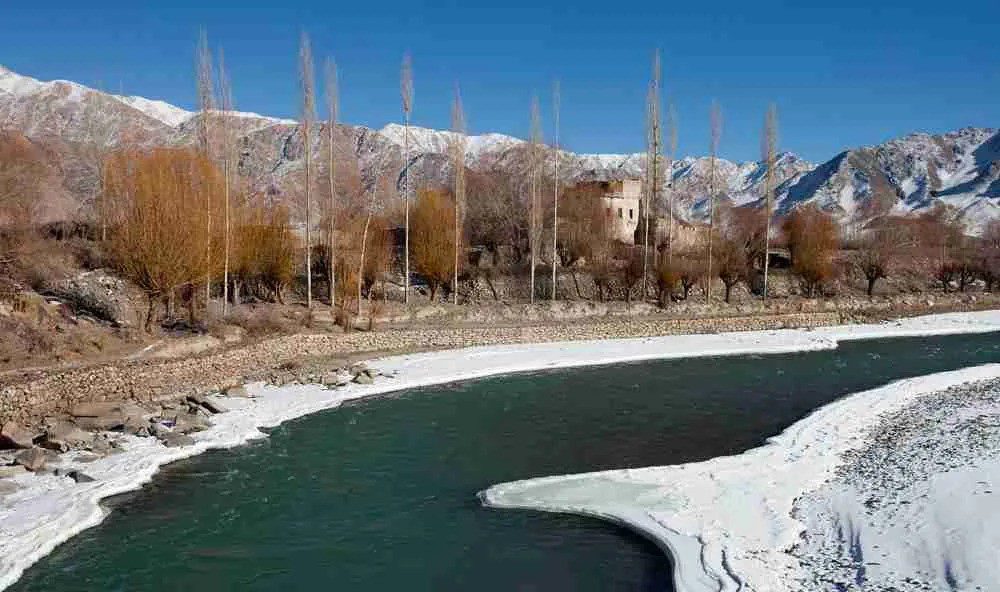Ladakh, often referred to as the “Land of High Passes,” transforms into a winter wonderland from November to February. Snow-capped mountains, frozen lakes, and peaceful monasteries set against pristine, snow-covered landscapes make winter in Ladakh an awe-inspiring experience. This guide will walk you through everything you need to know about planning a winter trip to Ladakh, from the best places to visit and unique activities to local tips on staying warm in the winter chill.
Why Visit Ladakh in Winter?
Unique Winter Experiences in Ladakh
Winter unveils Ladakh’s quieter, more tranquil side, drawing travelers seeking peace and the raw beauty of Himalayan winter. Fewer tourists mean more personalized experiences, while snow blankets the region, enhancing the beauty of iconic sites like Pangong Lake and Nubra Valley.
“Ladakh in winter feels like an untouched paradise. The snow, the silence, and the landscapes make it a place like no other.”
— Maria Fernandez, Photographer, Spain
Winter Weather in Ladakh: What to Expect
Ladakh’s winters are cold, with temperatures often dipping below -15°C, particularly at night. During the day, it stays around -5°C, though sunshine makes it feel warmer. Snowfall is common, creating mesmerizing views of the snow-laden peaks and valleys. It’s essential to come prepared with appropriate winter clothing to stay comfortable in these conditions.
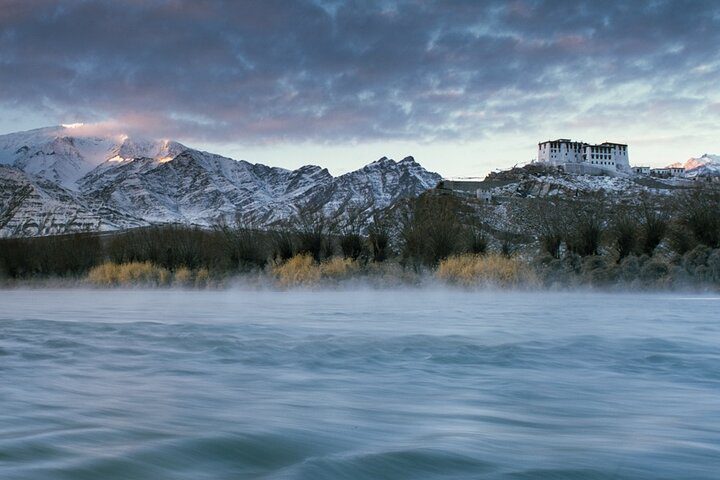
Best Places to Visit in Ladakh During Winter
Snow-Covered Pangong Lake: A Must-See Winter Marvel
Pangong Lake, famous for its changing hues, freezes entirely in winter, creating a smooth sheet of ice that extends across the lake’s massive surface. The surrounding snow-covered peaks amplify the serene beauty of this famous landmark, drawing photographers and nature lovers alike.
“Walking on Pangong’s frozen surface was surreal! It felt like I was stepping on a giant crystal.”
— David Murphy, Adventure Enthusiast, Canada
Zanskar Valley and the Famous Frozen River
The Zanskar Valley offers winter travelers a unique experience, especially with the Chadar Trek. This thrilling trek follows the frozen Zanskar River and is a testament to Ladakh’s adventurous spirit. The frozen river surrounded by icy cliffs presents unforgettable views and memories.
Nubra Valley: A Serene Winter Getaway
Known for its unique cold desert, Nubra Valley in winter becomes a quiet, picturesque retreat. Snowfall covers its rugged landscape, and nearby villages offer a glimpse into Ladakh’s remote lifestyle. The valley’s snow-blanketed dunes and peaceful monasteries make it a perfect spot for serenity seekers.
“In Nubra Valley, the snow-covered desert was beyond magical. It was one of the most peaceful experiences of my life.”
— Arjun Patel, Travel Blogger, India
Winter Activities in Ladakh: Adventure and Serenity Combined
Winter Trekking Options in Ladakh
Besides the famed Chadar Trek, other winter trekking routes offer a mix of adventure and breathtaking views. Trekking through Ladakh’s snow-covered terrain lets you witness an untouched winter landscape, from frozen rivers to snow-topped peaks. These treks are ideal for experienced hikers seeking adventure in a pristine environment.
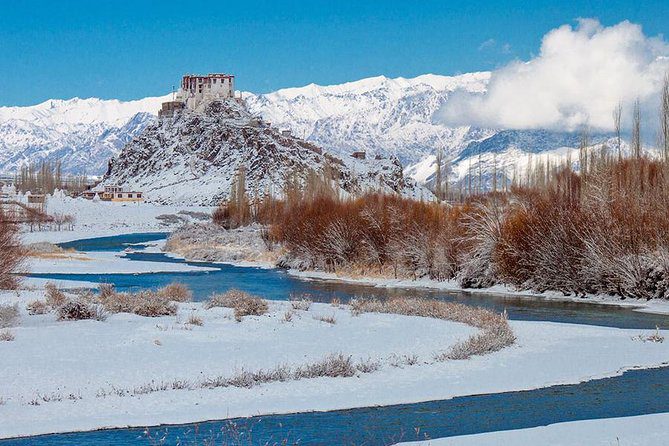
Snow-Related Adventure Sports
For adrenaline seekers, Ladakh offers activities such as skiing, snowboarding, and winter camping. These sports allow travelers to fully experience the rugged beauty of Ladakh in winter. The thrill of gliding over snowy slopes, surrounded by towering mountains, makes Ladakh an exciting winter sports destination.
Wildlife Spotting and Winter Photography
Ladakh’s winter is also a great time for wildlife spotting, especially the elusive snow leopard. Guided wildlife tours provide a safe and informative way to view these majestic creatures in their natural habitat. The snow-covered landscapes and frozen lakes provide excellent opportunities for photographers to capture Ladakh’s unique winter scenes.
“As a wildlife photographer, Ladakh in winter is a dream. I was fortunate to catch a glimpse of a snow leopard, and it was the highlight of my trip.”
— Jack Thompson, Wildlife Photographer, Australia
Cultural and Traditional Experiences in Ladakh’s Winter Season
Experiencing Local Winter Festivals in Ladakh
Ladakh’s winter festivals, like the Losar (New Year) Festival, provide a unique opportunity to witness local traditions, dance, and music. The cold doesn’t stop the community from gathering and celebrating, offering visitors a chance to experience Ladakh’s rich culture firsthand.
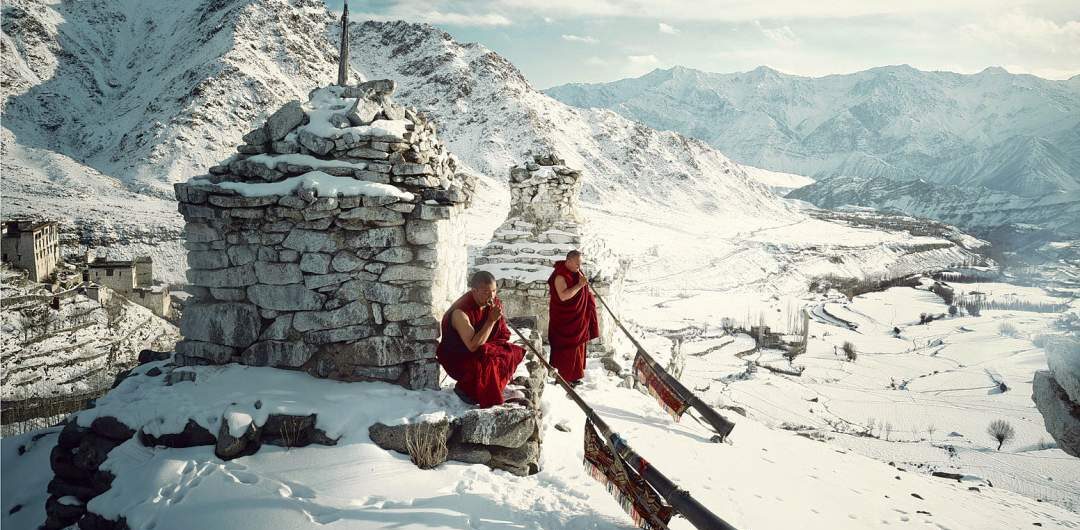
Visiting Buddhist Monasteries Covered in Snow
Monasteries like Thiksey and Hemis are magical in winter. These sacred sites, blanketed in snow, offer a peaceful retreat where visitors can meditate, observe rituals, and enjoy the solitude. The views from these monasteries are simply breathtaking, adding a spiritual dimension to the natural beauty.
“Witnessing the monasteries under a blanket of snow was incredibly calming. The monks welcomed us warmly, despite the freezing temperatures.”
— Emma Johansson, Yoga Instructor, Sweden
Ladakhi Hospitality in Winter: A Warm Welcome
The hospitality of Ladakhi people shines through in winter. Homestays offer a cozy atmosphere, delicious local food, and a chance to learn about Ladakhi customs and daily life. From sipping butter tea to learning about winter traditions, staying with locals adds warmth to the winter chill.
“The locals taught us the secret of butter tea to keep warm, and it was delicious! It truly helped us manage the cold.”
— Lisa Carter, Teacher, USA
How to Prepare for a Winter Trip to Ladakh
Essential Winter Clothing and Packing Tips
Packing properly is essential to enjoy Ladakh’s winter. Include insulated jackets, thermal inner layers, gloves, hats, and waterproof boots. Investing in quality gear will ensure comfort and warmth, allowing you to fully experience Ladakh without worrying about the cold.
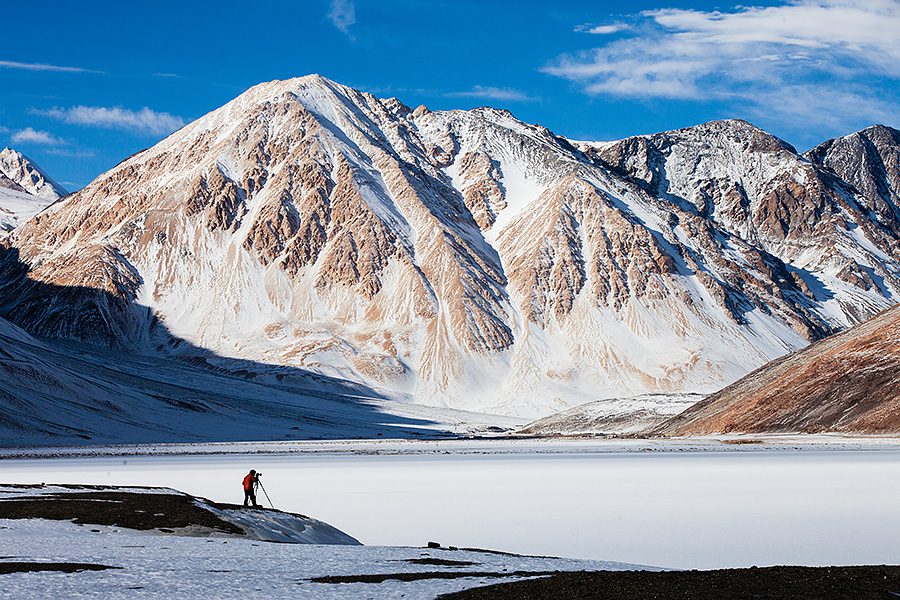
Adapting to High Altitude and Winter Conditions
Ladakh’s high altitude can affect visitors, so acclimatization is key. Take it slow during the first couple of days, drink plenty of water, and avoid strenuous activities until your body adjusts. Winter conditions add a layer of challenge, making gradual acclimatization even more important.
Tips for a Safe and Enjoyable Ladakh Winter Journey
Road safety is crucial in winter, as icy roads can be challenging to navigate. If traveling by car, ensure it’s winter-ready and equipped with chains for tires. Additionally, carrying a small first-aid kit, extra water, and snacks is recommended for any winter trip.
“The high altitude is challenging, but if you pace yourself and stay hydrated, it’s manageable. Ladakh’s beauty makes it all worthwhile.”
— Aaron Kim, Software Engineer, South Korea
Winter Accommodation and Staying Warm in Ladakh
Choosing the Right Accommodation in Leh and Beyond
Leh, being the primary hub, has a range of winter-ready accommodations, from hotels to cozy guesthouses. Some properties even provide heaters, hot water, and additional insulation to help guests brave the cold. Homestays offer a more authentic experience, allowing visitors to stay with locals and learn about their way of life.
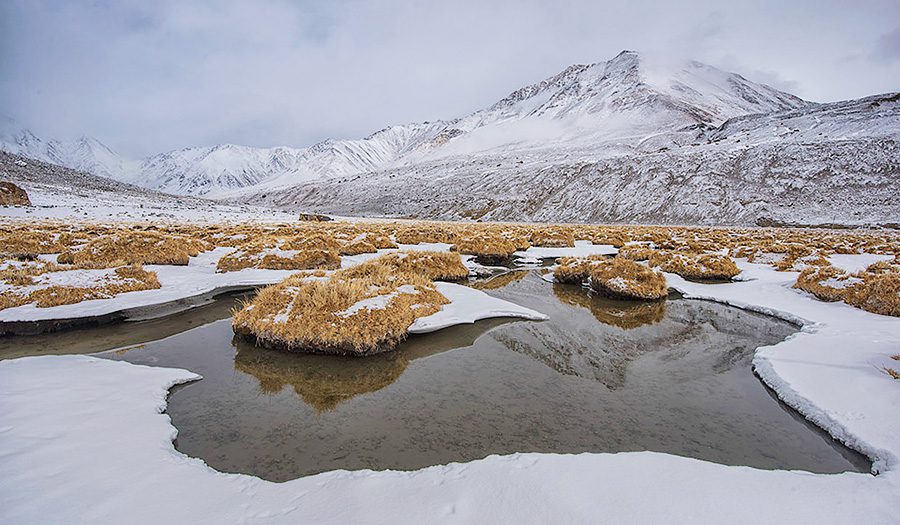
Staying Warm: Tips from Locals
Locals have mastered staying warm in Ladakh’s freezing winters. Their tips include drinking butter tea, wearing multiple layers, and gathering around Bukhari stoves. Visitors are encouraged to adopt these practices to stay comfortable during their trip.
Getting to Ladakh During Winter
Winter Road Conditions and Accessibility
During winter, many roads in Ladakh are closed due to heavy snowfall, and only the route from Srinagar remains open, albeit sometimes challenging to navigate. For those traveling by car, it’s crucial to check weather conditions and road accessibility before setting out. Winter tires and chains are often necessary.
Flying to Leh: Air Travel During Winter Months
Flying into Leh is often the best option for winter travelers. While flights operate year-round, weather delays are common, so it’s wise to keep an eye on weather updates and have a flexible itinerary. The flight into Leh offers stunning aerial views of snow-covered mountains, making the journey even more memorable.
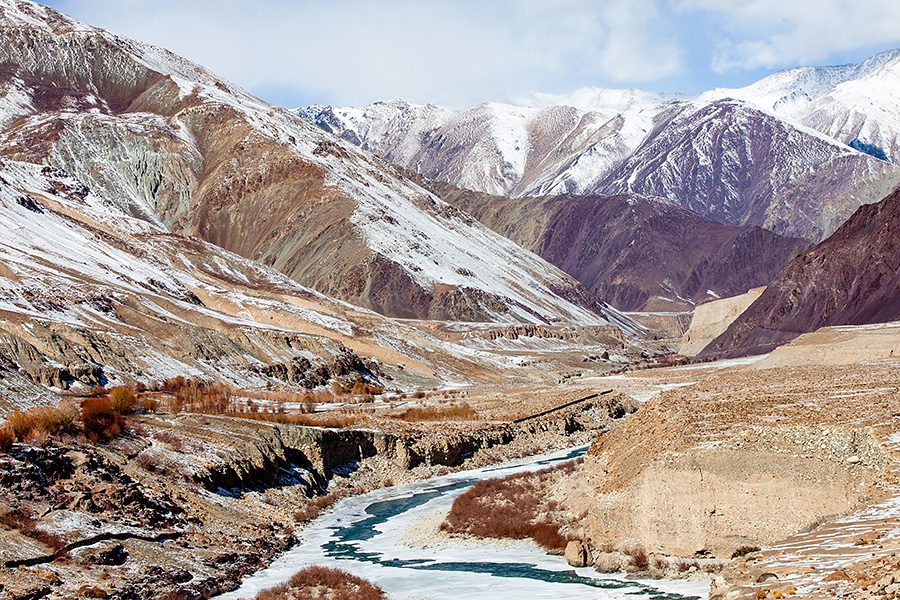
Capturing Ladakh’s Winter Wonderland on Camera
Photogenic Spots in Ladakh’s Winter Landscapes
For photography enthusiasts, Ladakh in winter is a dream. Key spots like Pangong Lake, Zanskar Valley, and monasteries offer postcard-worthy scenes, especially under the soft winter sunlight. The region’s snowy charm enhances each shot, creating images that capture Ladakh’s essence.
Tips for Photographing Snow and Frozen Lakes
Snow and ice present unique challenges in photography, so bring a spare battery, as cold weather drains them quickly. Utilize the natural light in the mornings and evenings for the best results, and experiment with different settings to capture the beauty of frozen lakes and snow-clad mountains.

“Ladakh’s winter landscapes are breathtaking. I took some of my favorite shots of all time there, especially with the golden sunlight over the snow.”
— Hugo Garcia, Nature Photographer, Brazil
Frequently Asked Questions About Visiting Ladakh in Winter
What is the Best Time to Visit Ladakh in Winter?
The best time to experience Ladakh’s winter wonderland is between December and February when snow covers the region, and temperatures are at their lowest.
Is it Safe to Visit Ladakh During Winter?
Yes, with proper preparation and acclimatization, winter travel to Ladakh is safe. Ensure you’re equipped with winter gear and plan your journey with some flexibility in case of weather-related delays.
How Cold Does Ladakh Get in Winter?
Daytime temperatures hover around -5°C, while nights can drop below -15°C, so it’s essential to bring thermal layers and winter accessories.
Conclusion
Ladakh in winter is a true wonderland of snow, serenity, and stunning views, offering a unique blend of adventure, culture, and peace. From frozen lakes to tranquil monasteries, Ladakh’s winter beauty promises a memorable experience for travelers seeking something truly extraordinary. Whether you’re trekking, enjoying the peaceful vistas, or photographing the pristine landscapes, Ladakh’s winter magic is sure to captivate.

